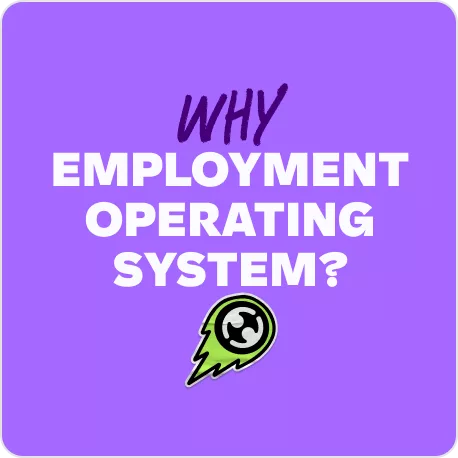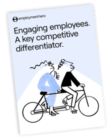8 Actionable Long-term HR Strategy Plan Examples
Failing to plan is the same as planning to fail when it comes to managing your people. Here are five essential reasons why you need to think strategically about human resources.

In any organisation, large or small, three fundamental systems of record form the business backbone; accounting and finance, customer relationship management and HR and employee management.
Many businesses now take a strategic approach to managing these key areas by using cloud technologies to run their accounting and finance processes in real-time, as well as manage their customer relationships.
However, many businesses continue to persist with a more reactive approach to HR. That’s why it’s time to start building your own human resources strategic plan (otherwise known as an HR strategy). Failing to plan is the same as planning to fail when it comes to managing your people.
What is a Human Resources Strategy plan?
An HR department in every business is responsible for finding and training employees. Besides that, they also help with conflict resolution, employee benefits, employee retention and development. A human resource strategy plan is taking those responsibilities and making sure they meet the goals, mission and future needs of the company.
What are the benefits of creating HR strategies?
We all know that the role of human resources and people management is changing. By implementing strategic human resources management, you’ll have a crystal clear vision of your goals and how to achieve them.
To understand how HR has evolved and continues to change, read more about the evolution of HR and people management.
Read on to find out the benefits of having an HR strategy in place.
1. Forecasting talent requirements
Being able to develop realistic forecasts of your people’s needs now and in the future is essential if you’re going to win the war on talent. On a day-to-day level, being able to optimise shift allocation will help you achieve efficiencies and reduce your wage bill.
Also, if you know how many staff you require to achieve the future strategic goals of the business and what jobs need to be filled, you can get an early start on finding the right talent.
2. Non-compliance costs
Everything from payroll to onboarding, performance management and employee data management comes with a huge amount of compliance and paperwork. Using spreadsheets and manual processes is not only time-consuming, but they are also prone to human error. And this means business risk.
By using strategic planning, you can identify any possible compliance gaps and keep your business in line with employment legislation.
To avoid common HR mistakes, consider these 8 common HR mistakes to avoid.
3. Happy employees are more productive
Beyond hiring the right candidate, a good HR strategy plays an important role in promoting employee engagement and satisfaction. These areas are crucial to developing a happy, productive workforce who become great ambassadors for your business.
With an HR strategic plan, you can formulate what is required of you to take care of your employees’ needs. It also keeps a check on morale, measures productivity and your employees’ sense of commitment.
4. Retention
Employee engagement goes hand in hand with retention. Once you’ve built a team of great people, you need to keep hold of them. So a big part of the overall business strategy needs to be focused on what you can do to retain employees. This includes ways to build your employees careers through formal recognition programs and career development pathways.
For strategies to retain top talent, explore how Employment Hero can help retain top talent.
5. Continuous improvement
Everyone knows that you can’t improve what you don’t measure. Without a strategic HR plan, how can you possibly understand what’s working and what’s not?
Through HR strategies, you can formally evaluate specific and measurable factors such as; employee turnover, the number of vacant positions, employee grievances, as well as satisfaction and dissatisfaction levels.
If you periodically gather and report data on what’s working, you’re much more likely to make consistent and accurate decisions.
To learn more about the future of HR automation, read what is the future of HR automation?. Read more: All you need to know about HR management
8 things to implement for a successful HR strategy
Taking a proactive approach to managing your people will put your business on the front foot— ready to identify and solve HR issues. By developing an HR strategic plan, you can reflect on the successes and failures of previous quarters. Doing so will help you effectively plan for attracting and retaining the right talent, which is key to your business achieving success.
Here are some HR strategy examples you can implement to gain a competitive advantage through your HR department.
1. Conduct regular HR audits
The beginning of the year is the perfect time to conduct a review of your HR processes and compliance. While these should continually be reviewed, it’s important to assess them at the start of each calendar year.
Human resources audits are an effective way to perform a gap analysis and review your current people management processes and obligations. By conducting an audit, you will be able to update any legalities and also see where improvements can be made, which can be included in your new HR strategy.
Common areas to complete an HR audit include:
- Compliance
- Record keeping
- Remuneration
- Performance reviews
- Policies and procedures
- Health and Safety
- Security
For more insights on HR audits, see our ultimate guide to HRIS systems. Read more: The future of HR automation
2. Set goals aligning with your business strategy
If you’re looking for information on how to introduce a goal-setting framework so you (and your entire team) can plan your goals effectively, we suggest giving thought to OKRs (Objectives and Key Results).
While OKRs are not as well known as their popular counterpart, key performance indicators (KPI), OKRs are a great tool to complement your company’s HR strategy.
They’re a transparent way to keep your team accountable and motivated whilst ensuring that your goals are 100% aligned at an individual, team and company level. If you’re looking for an all-in-one HR software that includes a visual OKR feature, get in touch with us today.
We can walk you through how Employment Hero can help simplify and align your company goals, so you continue to create a team of engaged, high performers.
3. Design the employee experience
When it comes to business, your employees are everything. They keep the wheels turning and are the heart and soul of everything you do. But have you ever thought about the experience they have as an employee?
From acquisition to onboarding, training and recognition, there are so many pieces to the employee experience puzzle that can set your workplace above the rest. When designing the employee experience, it’s crucial you map out every stage of the employee lifecycle and visualise your ideal scenario.
This allows you to create the perfect recipe for your employee experience.
Read more: How to empower employees with employee self service
An example of a designed employee experience
1. Attraction: Work with marketing to have a strong employer branding presence across social. Using social media and employee advocacy to recruit top talent to your business is a great way to keep your candidate funnel full.
2. Recruitment: Having a set interview process that ensures you hire the right person. This may include candidates having to complete a task or assignment.
3. Onboarding: Ensuring that the onboarding process includes information about their specific role and the wider organisation. It might also see you start new employees in a cohort instead of scattered days so they can complete induction together. Beyond the more technical parts of onboarding, consider ‘surprise and delight’ elements such as branded company merch and organising a special lunch with the hiring manager.
4. Development: Encouraging your employees to access online training and attend industry events that will improve their skills. Setting up an annual self-learning fund for each employee could be a good way to do this.
5. Retention: Creating professional development plans for your employees and rewarding them for great work. Using a goal-setting framework like OKRs and a well-thought-out career plan can make all the difference.
6. Separation: Create a way to support your employees through the exit process. This could be by a formal exit interview so you can improve and learn from experiences.
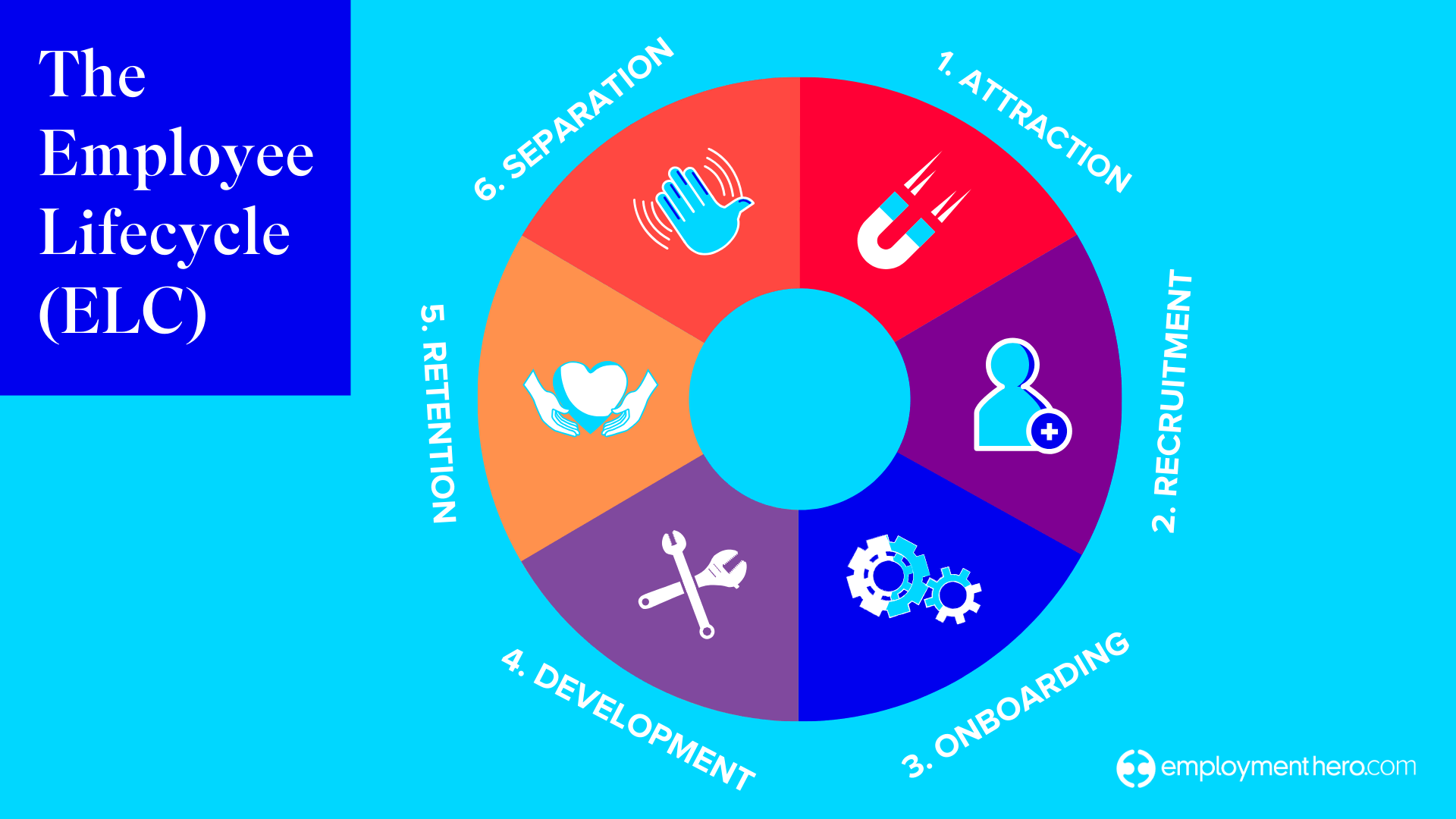
4. Improve your Employee Value Proposition (EVP)
If you’re not sure what an EVP is, it’s the balance of rewards, benefits and culture that the company can offer in return for amazing employee performance. In saying this, it’s important to remember that your employee value proposition extends beyond perks and benefits.
Why should you care about improving your EVP?
It’s an important piece of attracting top talent to your business. If you present well to a potential star candidate, they’re going to want to work for you. This in return, helps the human resources department recruit candidates a whole lot easier.
You might also even find that your time to fill roles decreases significantly. According to a study by People Scout, “when organisations live up to their marketed EVP, new employees arrive with a higher level of commitment at 38%, compared to organisations that don’t live up to their marketed EVP, which are at just 9%”.
When you get your EVP right and have star talent in your business, you can expect greater business growth as they’ll be more engaged in their role.
Read more: Emerging HR trends in the job market
5. Implement HR systems
If you’re looking to reduce the amount of time you spend on manual admin tasks and get strategic in your day-to-day, an HRIS can help you. By implementing an HR tech system like Employment Hero, you can reduce the amount of time you spend on admin tasks by up to 80%.
Just imagine no longer having to manually onboard an employee or keep employee files in dusty old filing cabinets! It’s also a great piece of tech to add to your long-term HR strategy!
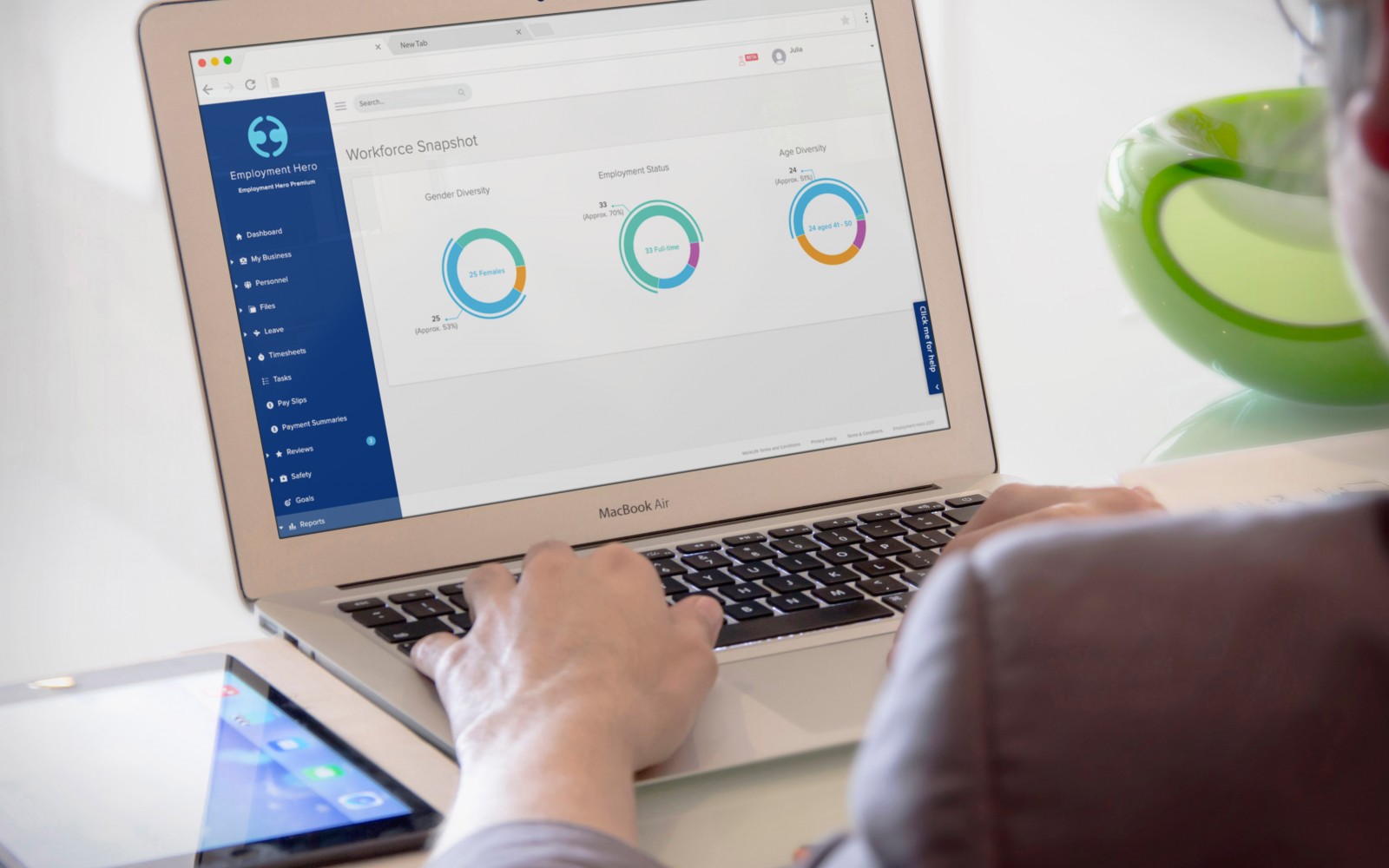
6. Provide professional development plans for employees
According to LinkedIn’s 2018 Learning Report, a massive 93% of employees said they would stay at a job longer if the company invested in their learning and development. This is a sign that the majority of employees place this as a top factor when determining whether or not to jump ship. But the benefits aren’t just for the employee.
Creating a professional development plan for your employees is a two-way street and a vital piece of your long-term HR strategy. When you have acquired top talent and develop their skills even further, you’ll have star employees that will be just as invested in your company as much as you’re invested in them!
You’ll also save money in the long run, as you won’t face the hidden costs of recruitment associated with employee turnover.
Saving costs, developing your team and giving your employees what they want? It sounds like a great strategic HR move to us!

7. Improve employee advocacy
Your employees are your best cheerleaders, so it makes sense to use them to leverage your brand. Whether it’s by incorporating employee advocacy into your HR strategy or getting your teams’ LinkedIn profiles up to speed (hello branded cover images and profile pictures!), there are many ways you can leverage your employees’ professional networks.
Social media is one of the most cost-effective places to reach new and potential customers, so we say this is something you might want to get on board with, and pronto! While employee advocacy strategies are a fairly new concept, they’re beginning to gain momentum.
With this being said, those who take advantage of employee advocacy will be the ones reaping the rewards!
What are the benefits of employee advocacy?
- Improves the company’s social media reach
- Attracts new business and potential clients
- Improves company culture and office buzz
- Improves retention rates
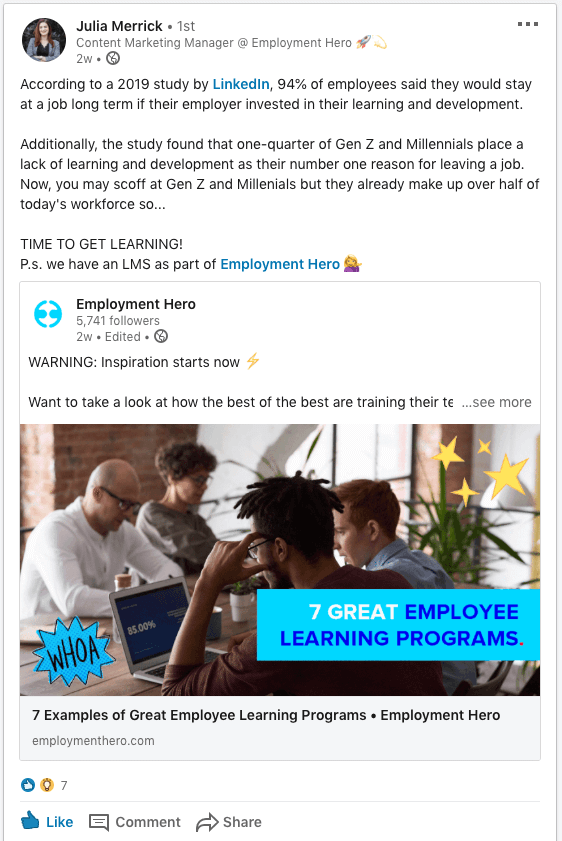
8. Gen Z talent acquisition and retention strategy
Gen Z is beginning to enter the workforce, so it’s important you have a long-term HR strategy in place to attract them. Born between 1995 and 2015, Gen Z’ers are different from previous generations that have entered the job market.
Why is it important to have an acquisition strategy for Gen Z?
While Millennials have been in the spotlight for many years, we’re beginning to investigate the traits of Gen Z. With Gen Z entering by the masses, it’s important you know how to hire and retain them.
Gen Z has grown up around digital technology and are naturally tech-savvy compared to their older counterparts. This alone changes how you should recruit Gen Z.
According to our recent Gen Z at work report, Gen Z characteristics are:
- Tech-savvy
- Risk adverse
- Independent
- Competitive
- Open minded
As Gen Z are naturally tech-savvy and connected on social media, we would suggest advertising job ads with social media first approach. We could even see Tik Tok become the ‘it’ place to recruit top talent from Gen Z!
For more insights on how HR can support managers and enhance their roles, read how can HR help managers succeed in their role?.
The wrap-up
This is the perfect time of year to start looking into long-term HR strategy. From implementing an HR automation system like Employment Hero, to getting prepared for the influx of Gen Z candidates you’ll be recruiting for in the future, now’s the time to get planning.
If you need help demonstrating the value of implementing HR software as part of your HR strategy, read our blog on building a business case for HR software here.
To learn more about you can improve HR strategy and achieve your HR goals, get in touch and one of our small business HR experts to show you how today!
Related Resources
-
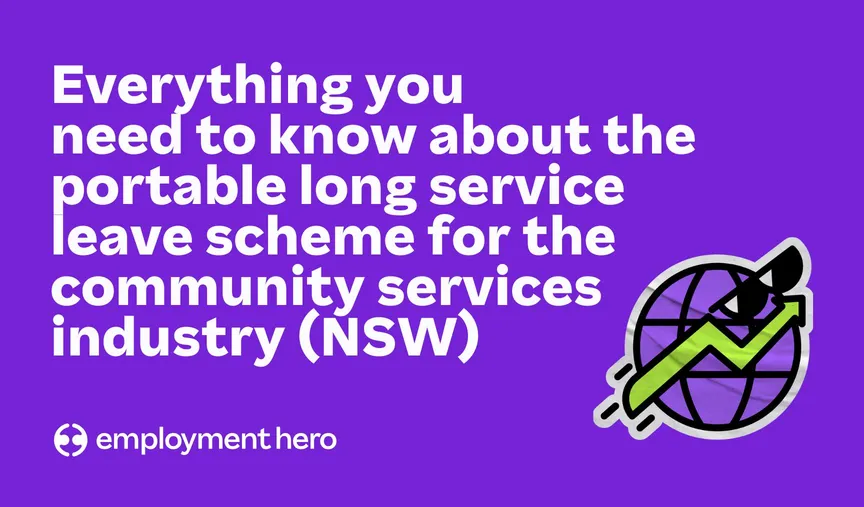 Read more: NSW Government introduces Portable Long Service Scheme for the Community Services Industry
Read more: NSW Government introduces Portable Long Service Scheme for the Community Services IndustryNSW Government introduces Portable Long Service Scheme for the Community Services Industry
The NSW Government has introduced portable long service leave for the community services industry. Learn what it is and what…
-
 Read more: Payday Super changes: What we’re fighting to fix and why it matters to you
Read more: Payday Super changes: What we’re fighting to fix and why it matters to youPayday Super changes: What we’re fighting to fix and why it matters to you
Big changes are coming to how superannuation is paid in Australia. Here’s what we’re asking Treasury to seriously consider updating…
-
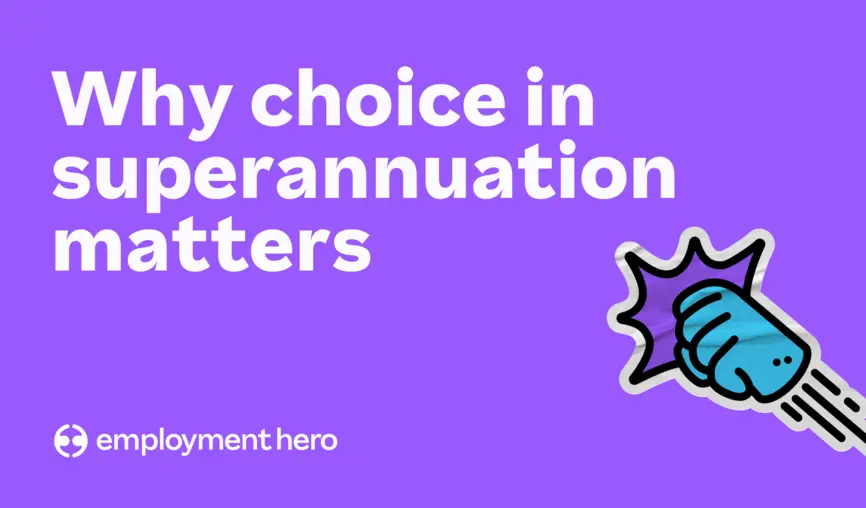 Read more: Why choice in superannuation matters
Read more: Why choice in superannuation mattersWhy choice in superannuation matters
What could be coming when Payday Super hits and what Employment Hero is doing about it.



